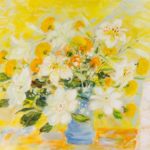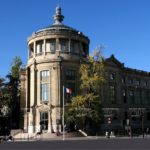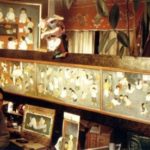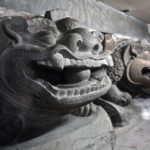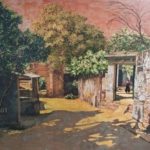Recently, French researcher Charlotte Aguttes-Reynier (President of the Asian Artists Association in Paris) presented the book Modern Art in Indochina (L’Art Moderne En Indochine) to the Vietnamese public, shedding light on the darkness that obscures the richness and importance of Indochinese art, an important part of international art history.
On this occasion, Charlotte Aguttes-Reynier talks to The Hanoi Times about her experiences after 10 years of research into Vietnam’s Golden Age of Art.
How did you come to research Indochinese art?
Since I was a child, I followed my father, the owner of the Aguttes auction house, to museums and collectors. In 1995, my family moved to Paris, where the art market was vibrant. I became interested in painting in general, oriental painting, and impressionism. Gradually, I have specialized in modern art.
Since 2013, I have been studying Indochinese art and artists from Asia. Since then, I have supervised and auctioned about 1,000 paintings, including more than 115 works by Mai Trung Thu, about 150 works by Le Pho, and nearly 100 works by Vu Cao Dam.
| French researcher Charlotte Aguttes-Reynier at her recent book launch in Hanoi. Photo: Ngo Minh/The Hanoi Times |
You are both an auction house representative and a researcher. Do you feel that these two roles are independent of each other?
To answer this question, let me tell you a story. In 2014, during a chess meeting in Paris, I had the opportunity to see the work Enjoying Tea by Le Pho, a beautiful silk painting of very high artistic quality. I began researching this painting, the artist, and his career… and found my passion. I was surprised to discover the difference in results between auctions in Asia and other countries around the world.
This painting deserves to be seen in a different light, and Aguttes Auction House has given it the right value, far above the values previously established in Europe. I feel I have a mission to blow away the dust of the past that covers paintings and to bring Vietnamese artists to light.
In 2019, I founded the Association of Asian Artists in Paris with the aim of clarifying knowledge about the careers of artists with East-West cultures. Since then, I have always wanted to write a work on Vietnam in the period 1925-1945, hoping to shed light on the last 20 years of Indochinese art history. This is how Modern Art in Indochina came about.
| Le Pho’s Enjoying Tea is the favorite silk painting of the French scholar Charlotte Aguttes-Reynier. |
Did the process of deciphering Indochinese art give you any surprises?
The book is about the Indochina School of Fine Arts (L’Ecole Superieure des Beaux-Arts d’Indochine), founded in 1924 by its first French director, Victor Tardieu, and his Vietnamese colleague, the artist Nguyen Nam Son. Now it’s the Vietnam University of Fine Arts in Hanoi.
I tried to find information and original works of famous Vietnamese painters from each period of Indochinese fine arts, such as Le Pho, Mai Trung Thu, Vu Cao Dam, Le Thi Luu, To Ngoc Van, Nguyen Gia Tri, and others.
There is an interesting thing in the work White Comb by Le Pho. If the symbolic woman occupies an important place in Le Pho’s works, White Comb is an exception. The woman has been painted half-faced, which is clear evidence of the influence of the Italian Renaissance style after Le Pho visited this country in the early 1930s.
Another interesting artist is Le Thi Luu. Unlike her peers, who always portray the image of elegant women playing music and reading books, she adds a personal touch when she paints them in a spring scene or working in the rice field.
| Charlotte Aguttes-Reynier has released a 432-page book in Vietnamese, French, and English on the history of the Indochina College of Fine Arts, now the Vietnam Fine Arts University, in Hanoi. |
What do you think is the position of Vietnamese painting in the world today?
I think that the works of French and Vietnamese artists attract almost equal numbers of collectors. Since about ten years ago, the works of artists who graduated from the Indochina School of Fine Arts have continued to set price records.
Works by the founders, teachers, and directors of the Indochinese School of Fine Arts, such as Victor Tardieu, Evariste Jonchère, or Joseph Inguimberty, are indispensable in collections, along with works by key artists who were trained by them, especially Le Pho, Nguyen Phan Chanh, Nguyen Gia Tri, Vu Cao Dam, Mai Trung Thu…
How do you assess modern Vietnamese art?
Vietnamese fine art is always interesting and sought after in the world. However, I think the domestic art market is still in its formation stage and has many problems.
First, current transactions are mainly in the private sector, meaning buyers and sellers negotiate directly. Second, in the digital age, buying and selling a work of art has become a sustainable and transferable investment, like buying and selling real estate. It is the link between the past and reality. However, there are no specific regulations for this in Vietnam.
From international experience, I think collectors need to be vigilant, supplement their knowledge, and not trust any certificate but trust a professional inspection.
We also have a solution for non-payment of works, requiring a deposit when participating in the auction.
Thanks for your time!




